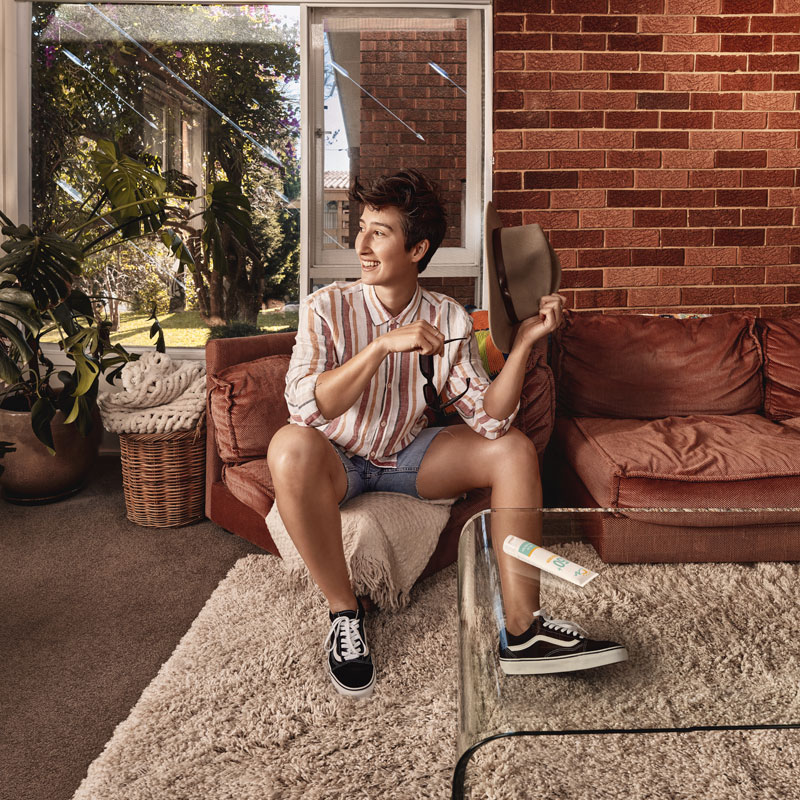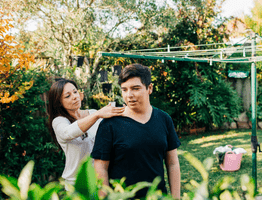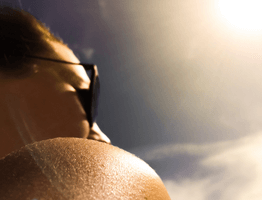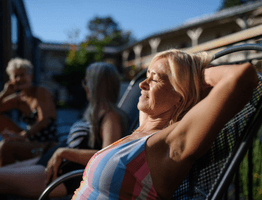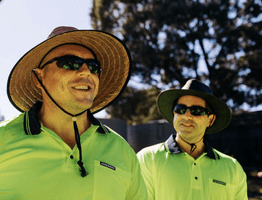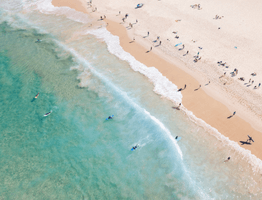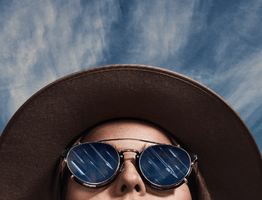How do UV rays cause skin cancer?
95% of melanoma and 99% of non-melanoma skin cancers are caused by overexposure to ultraviolet (UV) radiation from the sun.[1]
When your skin cells receive too much UV it can cause mutations to their DNA. If these mutations are not repaired by the body, they can lead to melanoma—the most lethal form of skin cancer.
At just 1mm deep, skin cancers can enter your blood stream and spread to other parts of your body, putting your life at risk.
Remember: even though you cannot see UV, the danger is real.
Protecting your skin from UV is the best way to prevent melanoma and other skin cancers.
How do UV rays cause skin cancer?
95% of melanoma and 99% of non-melanoma skin cancers are caused by overexposure to ultraviolet (UV) radiation from the sun.[1]
When your skin cells receive too much UV it can cause mutations to their DNA. If these mutations are not repaired by the body, they can lead to melanoma—the most lethal form of skin cancer.
Remember: even though you cannot see UV, the danger is real.
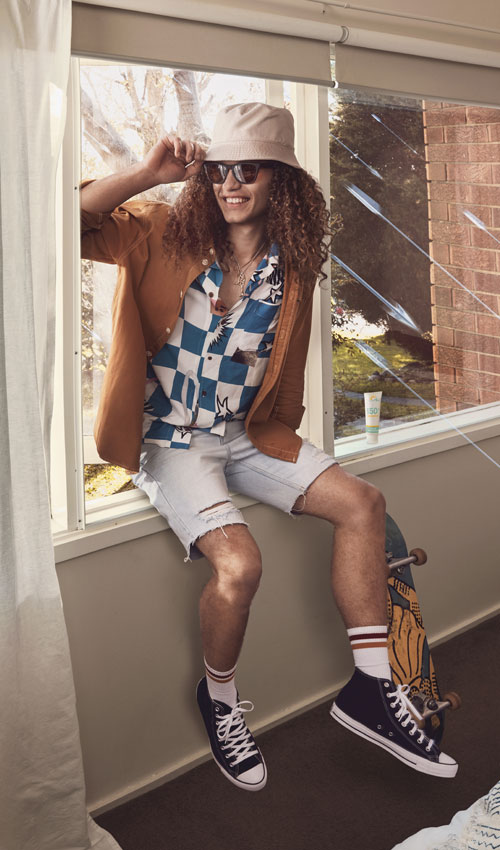
How can you prevent skin cancer?
You can keep yourself safe and reduce your risk of skin cancer by protecting your skin from UV.
As the days get longer and the sun's UV rays get stronger, be prepared and stay safe by doing 5 simple things:
SLIP on protective clothing
SLOP on SPF50+ sunscreen
SLAP on a wide-brim hat
SEEK shade
SLIDE on sunglasses
How can you prevent skin cancer?
You can keep yourself safe and reduce your risk of skin cancer by protecting your skin from UV.
As the days get longer and the sun's UV rays get stronger, be prepared and stay safe by doing 5 simple things:
![]()
SLIP on protective clothing![]()
SLOP on SPF50+ sunscreen![]()
SLAP on a wide-brim hat
![]()
SEEK shade
![]()
SLIDE on sunglasses
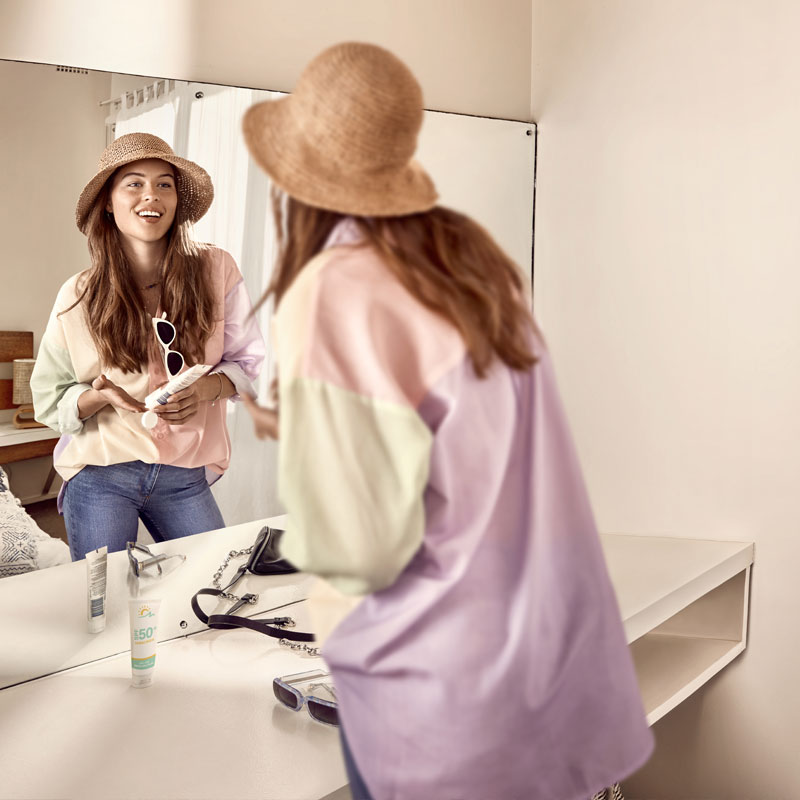
When should I protect my skin from UV?
The UV index helps you understand when to protect your skin from UV.
The UV index ranges from 1 (low) to 11+ (extreme). It is updated throughout the day with real-time information from the Bureau of Meteorology. The higher the UV index number, the shorter the amount of time before there's damage to your skin that can lead to skin cancer. And remember, UV is present even on cool and cloudy days.
The general rule is to protect your skin from the sun when the UV index is 3 or above.
In Australia, UV is 3 or above most months of the year but peaks in the middle of the day and is often extreme in summer. Always remember to slip, slop, slap, seek and slide when you are outdoors.

When should I protect my skin from UV?
The UV index ranges from 1 (low) to 11+ (extreme). The higher the UV index number, the shorter the amount of time before there's damage to your skin that can lead to skin cancer.
The general rule is to protect your skin from the sun when the UV index is 3 or above.
Always remember to slip, slop, slap, seek and slide when you are outdoors.

Watch the 'Arrows' video
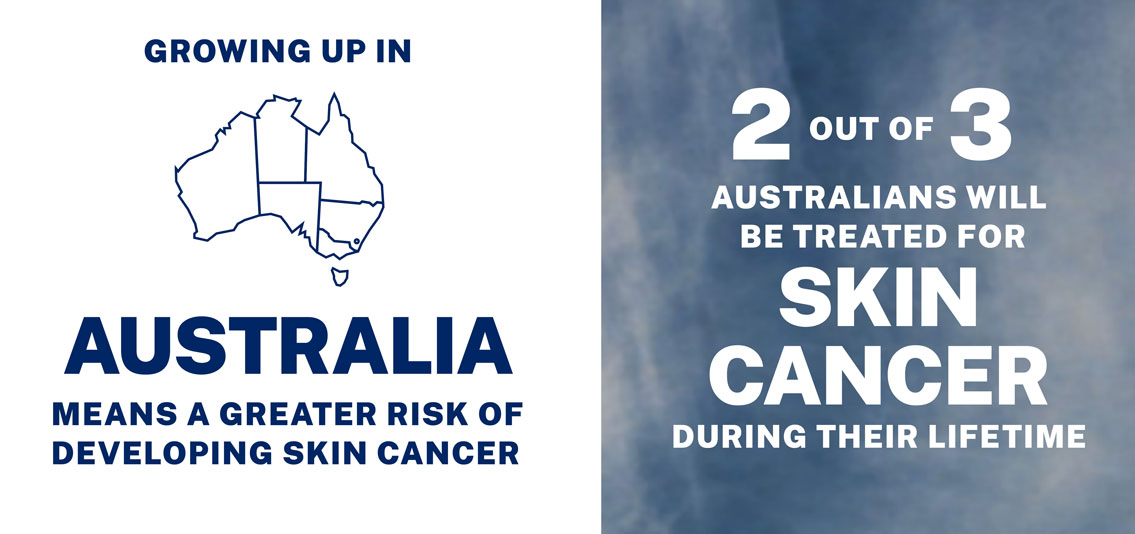
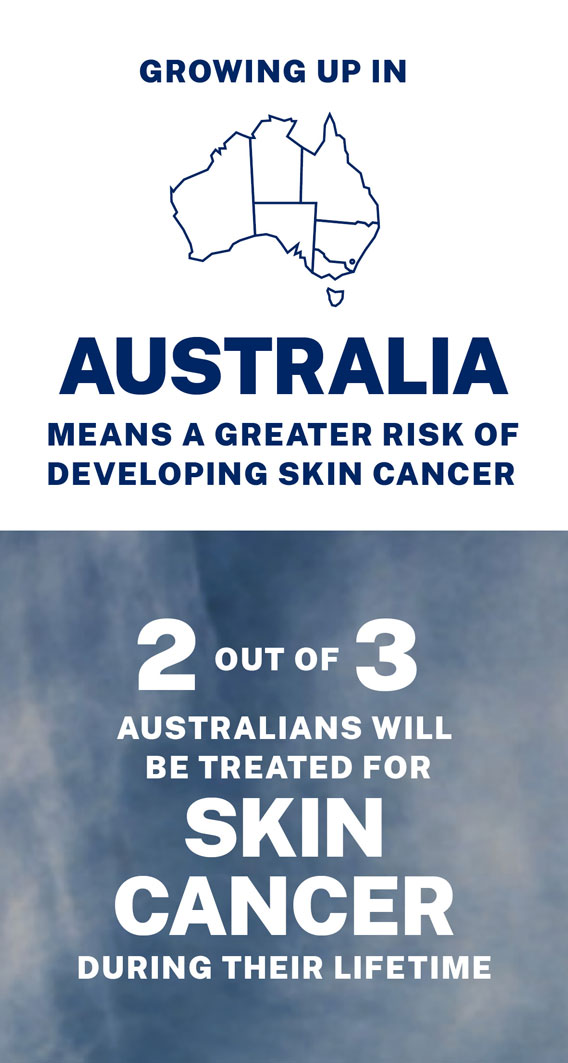
Skin cancer personal stories
Frequently asked questions about skin cancer
Get answers
Overexposure to UV radiation causes more than 95% of skin cancers.
There are three main types of skin cancer caused by damage to skin cells from UV radiation:
- Melanoma
- Basal Cell Carcinoma (BCC)
- Squamous Cell Carcinoma (SCC)
Melanoma is the most dangerous type of skin cancer.
Melanoma is a cancer of the melanocyte cells in the epidermis of the skin. These are the cells that make the melanin that results in your skin colour.
It is by far the most serious and dangerous type of skin cancer because it can spread easily to other organs in the body.
The most common skin cancer types are BCCs and SCCs.
BCCs and SCCs often grouped together as 'non-melanoma' skin cancers. These cancers do not usually spread to other parts of the body, although they do require prompt treatment to prevent this from happening. They also tend to be less dangerous than melanoma.
Skin cancers can look very different from each other. However, the one thing they have in common is that they change in appearance.
So, when it comes to detecting skin cancer, it’s important to become familiar with the look of your skin.
Becoming more aware of your skin will help you notice any changes that may suggest a skin cancer. A family member or friend can help you keep an eye on hard to see areas of skin. Any change may seem minor but should not be ignored.
Changes to your skin include:
- A new spot or mole appears.
- An existing spot or mole that:
- changes colour, thickness or shape,
- appears asymmetrical,
- becomes darker or blotchy,
- crusty sores that don’t heal,
- and/or is a small lumps that are red, pale or pearly in colour.
If you’re worried about a mole or notice any changes to your skin that concern you, see your doctor as soon as possible. Cancers that are diagnosed early can be easier to treat.
- Be prepared before you leave the house each day as UV increases throughout the day. Check the UV Index daily and always protect your skin in five simple ways: slip on protective clothing, slop on SPF50+ sunscreen, slap on a wide-brimmed hat, seek shade and slide on sunglasses.
Learn more >
- Get the free SunSmart UV app to check the UV index for your location.
Download the app >
- Skin colour is one of the factors that contribute to your risk. People with paler skin colours that burn visibly are more at risk. People with darker skin still need to protect their skin.
Learn more about skin types >
Talk to your doctor to find out more about your risk of skin cancer.
Skin cancer is the most diagnosed cancer in Australia each year. It is estimated that 2 in 3 Australians are diagnosed with skin cancer by the age of 70 years.[2]
If you are worried about a mole or notice any changes to your skin, make an appointment with your doctor for a skin check as soon as possible.
UV radiation is dangerous because we cannot see it or feel it—it can be damaging to our skin without us knowing.
The general rule is to protect your skin from the sun when the UV index is 3 or above.
Download the free SunSmart app to know when UV is 3 or above in your location.
No, there is nothing healthy about a tan.
Tanning is damaged skin cells. In response to UV damage, skin cells produce melanin to protect themselves. However, one damaged cell can start a deadly melanoma growing.
The bottom line: tanning is skin cells in trauma, trying to protect themselves from cancer.
